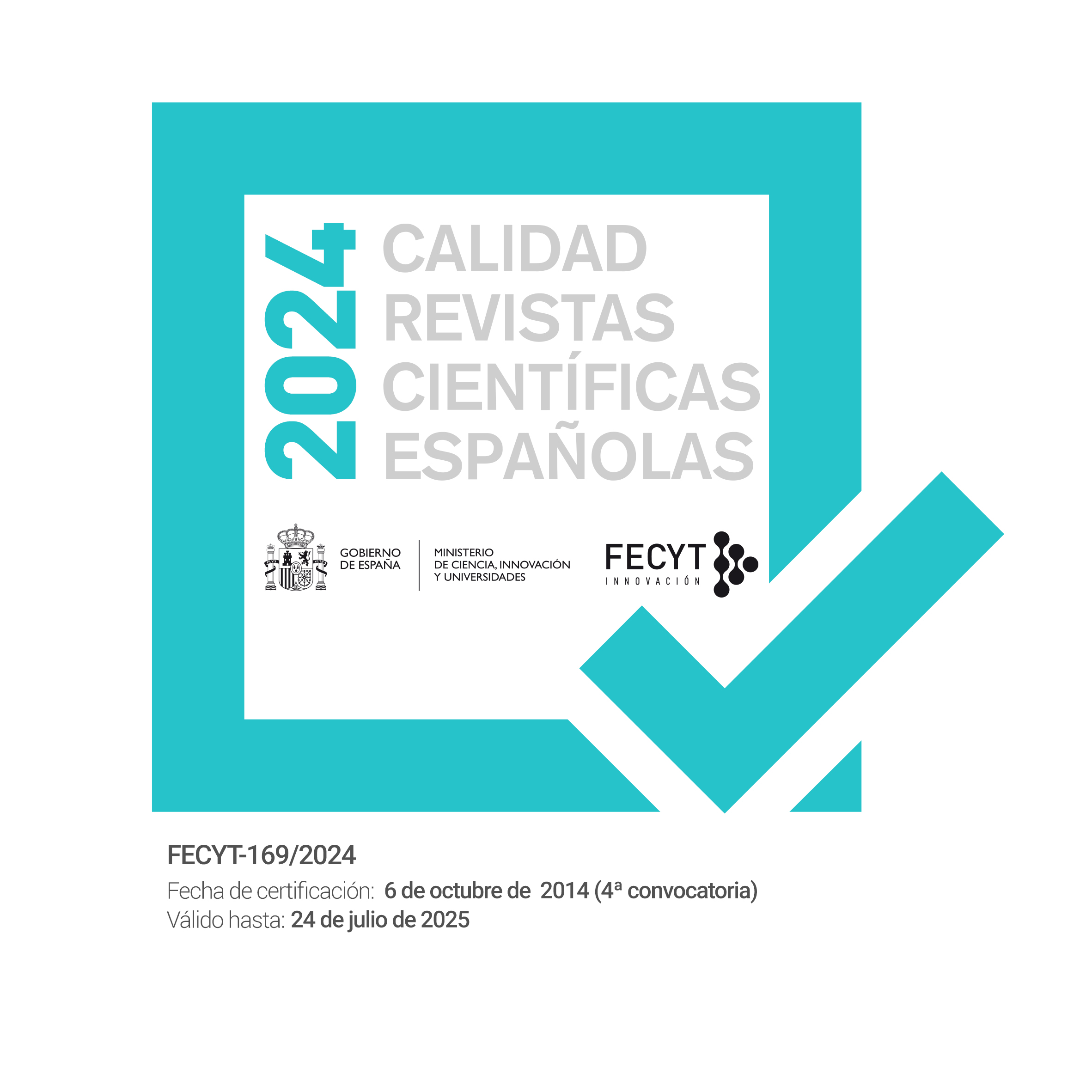A verbo-tonal approach to the acquisition of rhythm in L2 French through gestures
DOI:
https://doi.org/10.30827/portalin.vi44.31859Keywords:
ritmo, teatro, método verbo-tonal, Francés L2, gestualidadAbstract
In this article, we will focus on rhythmic structure and production in French L2 by Spanish speakers. French and Spanish differ in the position, domain and function of the primary stress (in French, the primary stress is fixed, oxytone, has a demarcative function and affects the rhythmic group, whereas in Spanish, the lexical stress is free, mostly paroxytone, has a distinctive function and affects the word).
The corpus chosen was taken from a contemporary French play (Grumberg 2013). The participants were a native French speaker and three Spanish-speaking learners of French. The study was structured in two phases, with a clear distinction in terms of tasks and presentation of the input (Phase I: visual/reading; Phase II: phonic/listening; gestural). Phase I consisted of recording the participants reading and listening to the whole fragment. After diagnosing the prosodic deviations from the model, Phase II consisted of recording the productions with the facilitating gestural proposal. The acoustic parameter analysed was the mean syllable duration of stressed syllables (primary stress) and unstressed syllables.
The results show that for primary stress, the pedagogical gesture effectively attenuated the latency of the typical Spanish trochaic rhythm.
Downloads
References
Alazard, C., Astésano, C., & Billières, M. (2012). MULTIPHONIA: A MULTImodal database of PHONetics teaching methods in classroom InterActions. Proceedings of the Eighth International Conference on Language Resources and Evaluation (LREC-2012), 2578–2583. European Languages Resources Association (ELRA).
Astésano, C. (2001). Rythme et accentuation en français: Invariance et variabilité stylistique. L’Harmattan.
Baqué, L., Daoussi, S., & Estrada Medina, M. (2017). Acentuación y desacentuación en FLE en un contexto de aprendizaje universitario: ¿Hacia la adquisición del patrón acentual de la L2? E-AESLA, 3, 18–29. http://cvc.cervantes.es/lengua/eaesla/eaesla
_03.htm
Boersma, P., & Weenink, D. (2020). Praat: Doing phonetics by computer (Version 6.1.16).
Bolinger, D. (1985). Intonation and its parts. Edward Arnold.
Cutler, A. (2012). Native listening: Language experience and the recognition of spoken words. MIT Press.
Di Cristo, A. (2005). Éléments de prosodie. En N. Nguyen, S. Wauquier-Gravelines, & J. Durand (Eds.), Phonologie et phonétique. Forme et substance. Lavoisier.
Di Cristo, A. (2010). Le pouvoir de la prosodie ou la revanche de Cendrillon. En L. Baqué & M. Estrada (Eds.), La langue et l’être communiquant. Hommage à Julio Murillo (pp. 95–113). CIPA.
Goldman, J.-P., & Schwab, S. (2014). EasyAlign Spanish: A (semi-)automatic segmentation tool under Praat. En Y. Congosto, M. L. Montero, & A. Salvador (Eds.), Fonética experimental, Espacio Europeo de Educación Superior e Investigación, Proc. V Congreso de Fonética Experimental 2011 (pp. 629–640). Arco/Libros.
Grumberg, J. C. (2013). Pour en finir avec la question juive. Actes Sud Editions.
Guberina, P. (2008). Retrospección (Edición en español y prólogo de Julio Murillo). CIPA.
Léon, P. (1992). Phonétisme et prononciation du français. Nathan Université.
Li, P., Baills, F., Alazard-Guiu, C., Baqué, L., & Prieto, P. (2023). A pedagogical note on teaching L2 prosody and speech sounds using hand gestures. Journal of Second Language Pronunciation, 9(3), 340–349. https://doi.org/10.1075/JSLP.23043.LI
Munro, M. J., & Derwing, T. M. (1995). Foreign accent, comprehensibility, and intelligibility in the speech of second language learners. Language Learning, 45(1), 73–97.
Osorio, M. (2019). Iconicidad entre habla y gestualidad: Un enfoque verbo-tonal de la enseñanza-aprendizaje del ritmo en francés a hispanohablantes [Tesis doctoral, Autonomous University of Barcelona]. https://www.tdx.cat/handle/10803/669647
#page=1
Patel, A. (2008). Music, language, and the brain. Oxford University Press.
Pavelin, B., & Frankol, D. (2014). Du corps à la parole à la lumière de l’approche verbo-tonale. En M.-J. De Man & S. De Vriendt (Eds.), Du son à la parole (pp. 115–123). CIPA.
Renard, R. (1979). La méthode verbo-tonale de correction phonétique. Didier.
Downloads
Published
How to Cite
Issue
Section
License
Copyright (c) 2025 Syrine DAOUSSI, Marta Osorio Álvarez

This work is licensed under a Creative Commons Attribution 4.0 International License.



















